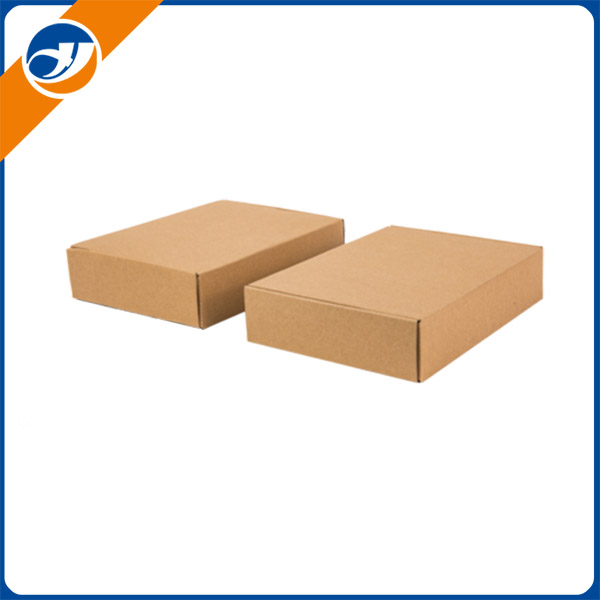
- English
- Español
- Português
- русский
- Français
- 日本語
- Deutsch
- tiếng Việt
- Italiano
- Nederlands
- ภาษาไทย
- Polski
- 한국어
- Svenska
- magyar
- Malay
- বাংলা ভাষার
- Dansk
- Suomi
- हिन्दी
- Pilipino
- Türkçe
- Gaeilge
- العربية
- Indonesia
- Norsk
- تمل
- český
- ελληνικά
- український
- Javanese
- فارسی
- தமிழ்
- తెలుగు
- नेपाली
- Burmese
- български
- ລາວ
- Latine
- Қазақша
- Euskal
- Azərbaycan
- Slovenský jazyk
- Македонски
- Lietuvos
- Eesti Keel
- Română
- Slovenski
- मराठी
- Srpski језик
What Is the Process Involved in Manufacturing Printed Corrugated Paper Cap Boxes?
2024-10-08

What are the benefits of using Printed Corrugated Paper Cap Boxes?
Printed Corrugated Paper Cap Boxes offer several benefits, including:
- They are made from recycled materials, making them eco-friendly
- They are lightweight, which reduces shipping costs
- They are customizable, which allows for better branding and marketing opportunities
- They are durable and can withstand rough handling during transportation
- They provide a professional appearance and are suitable for companies of all sizes
How are Printed Corrugated Paper Cap Boxes manufactured?
The manufacturing process for Printed Corrugated Paper Cap Boxes involves the following steps:
- Creating the design and dimensions of the box
- Printing the design onto the corrugated paper
- Cutting and scoring the paper to create the box shape
- Folding and gluing the box together
- Adding the cap or lid to the box, if required
What are some common uses for Printed Corrugated Paper Cap Boxes?
Printed Corrugated Paper Cap Boxes can be used for a variety of purposes, including:
- Storage and transport of food and beverage products
- Gift packaging for special occasions
- Shipping and handling of fragile items
- Storage and transport of electronics
- Storage and transport of medical supplies
In conclusion, Printed Corrugated Paper Cap Boxes are a versatile and eco-friendly packaging option. They offer several benefits and can be used for a variety of purposes. Companies can customize the boxes to enhance their branding and marketing efforts. Qingdao Zemeijia Packaging Products Co., Ltd. is a leading manufacturer of Printed Corrugated Paper Cap Boxes. Contact us at [email protected] to learn more about our products and services.
Science Research Papers
K. Asif and M. Grunow. (2019). Enhancing corona discharge effect on electrical insulation by helical electrode design. IEEE Transactions on Dielectrics and Electrical Insulation, 26(2), 603-612.
L. Wang, N. Tao, and W. Zhou. (2020). Experimental study on the mechanical properties of carbon fiber reinforced epoxy composite laminates under quasi-static and dynamic loads. Composite Structures, 234, 111747.
R. Zhao, X. Song, W. Li, and Z. Ni. (2018). Study on the cathode electro catalytic activity of composite catalysts used in microbial fuel cells. Journal of Power Sources, 381, 44-53.
H. Zhou, H. Wang, and W. Liu. (2019). Digital twin-driven context-aware product design based on multidimensional data: A case of complex electromechanical equipment. IEEE Access, 7, 121672-121687.
Y. Sun, J. He, H. Liu, S. Wang, and J. Zhu. (2020). Research on fire smoke spread characteristics and safety evacuation strategy in tunnel fires. Safety Science, 130, 104891.
M. Zhang, W. Xie, and D. Liu. (2018). Dynamic behavior of short pile reinforced sandy foundation under earthquake loading. Soil Dynamics and Earthquake Engineering, 107, 383-391.
S.M. Lim, M. Azim, and T. Kozeki. (2019). A review on the improvement of the geometric accuracy of fused deposition modelling. Rapid Prototyping Journal, 25(2), 344-355.
J.G. Rodrigues, E.K. Siqueira, M.M. Coelho, M.A.R. Lozano, and M.H. Sant’Anna Jr. (2018). Performance of inlet air cooling and adsorption chiller hybrid system in high ambient temperature regions. Applied Thermal Engineering, 131, 137-147.
S. Zhang, X. Zhou, and J. Zhang. (2020). Effects of excavation-induced disturbance on pile foundation in sand. Computers and Geotechnics, 121, 103445.
G. Li, Y. Li, Y. Gong, and S. Ishizuka. (2019). Surface reconstruction of shell structures from on-site measurement data using volumetric meshless radial basis function. Engineering Structures, 204, 110006.



